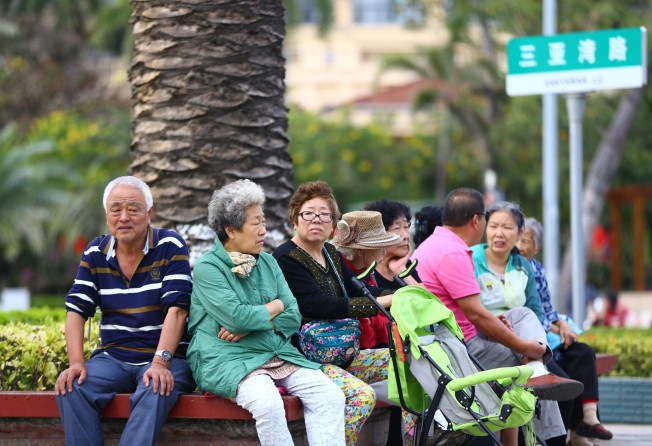China’s growth model is losing steam. Is more market freedom the best way to avoid an economic slump?
- Investment, technological advancement and population control have transformed China’s economy – but there are signs the old economic model is hitting the buffers
- Beijing must relax its grip and allow entrepreneurial initiative to flourish, or risk a hard economic landing

China’s growth during the past 30 years is without parallel in economic history. Within one generation, the country has transformed itself beyond recognition. It has also invalidated Western economic orthodoxy that asserts that sustained growth requires a free-market economy.
China succeeded where the Soviet Union failed. In the process, the Chinese have become much more prosperous. The World Bank estimates that the national poverty rate has now fallen to levels comparable to that in the US, a paragon of capitalism.
There is much on which to congratulate China’s economic planners. Still, past performance is no guarantee of future success. There are increasingly irrefutable signs that China’s growth model is hitting the buffers.
China’s dizzying development drive has been the result of three unique, but mutually supporting, factors. First was the unprecedented investment boom, financed by ever-expanding credit.
Since the 1990s, China has invested on average more than 40 per cent of its GDP, and more than that since the global financial crisis. No other country has ever done anything remotely comparable over a similarly prolonged stretch of time.
Second, China’s one-child policy led to an extended demographic sweet spot. The economically active population grew rapidly relative to those either too young or too old to work.
Again, no other country has ever enjoyed such a drawn-out demographic honeymoon. The demographic dividend fuelled an abnormally high savings rate, funding the investment-driven development strategy. Currently at almost 45 per cent, China’s savings rate is the highest in the world, and has been for at least a decade.
Last, productivity increased rapidly as the labour force swapped the rice paddies of rural areas for the factories of burgeoning cities. Opening the country to technology from abroad and loosening the stranglehold of state control further enhanced productivity growth.
Between 1980 and 2010, total factor productivity increased by 33 per cent, twice the performance of Japan and well ahead of the US.
Now the tide is turning. China has become so overinvested that its portfolio of profitable projects is running dry. Before the financial crisis, it took China around four percentage points of GDP in investment to generate one per cent of output growth. By 2019, this had risen to over seven percentage points of investment.
There simply are not that many compelling projects left. Simultaneously, symptoms of corporate excess debt are becoming ever harder to hide. The investment model of growth is over.
Demography has also turned negative. The share of the elderly, relative to the working-age population rose by over five percentage points between 2013 and 2020.
Before 2013, it had taken over 50 years to generate a similar increase. China is ageing fast. As labour becomes scarcer, the strategy of piling in more workers to prop up growth has become elusive.
What about productivity growth? No encouraging news either. Between 2010 and 2019, total factor productivity in China fell by 5 per cent. This contrasts with a positive 5 per cent growth in both Japan and the US. In other words, once you correct for the added labour and capital, the efficiency of Chinese production has declined.
Where there is shadow, there must be light. Policymakers know they need to get productivity up, lest they risk an economic slump that could endanger the basic tenets of the political order.

Beijing also understands that this requires less top-down planning and more local initiative. It recognises the need for more market discipline. The tolerance for defaults of insolvent firms, including state-owned companies, is on the rise.
There have been some false dawns of attempted liberalisation and decentralisation. The intellectual understanding that growth will require more flexibility runs counter to the instinct to try to control affairs in a resolutely top-down manner.
The party leadership seems to have lived Saint Augustine’s famous prayer: “Give me chastity and continence, but not yet!” The fact that the People’s Bank of China is now in monetary easing mode to combat softer growth suggests the delaying tactic is alive and well.
A lot will depend on whether President Xi Jinping and his inner circle can relax their controlling grip – whether they let entrepreneurial initiative and innovation flourish at all levels, patiently accepting the volatility that may come with it.
If they are serious, the economy will be able to generate a soft landing towards its potential rate, which I estimate to be close to 4 per cent – nothing to sneer at. Otherwise, economic and geopolitical risks will rise around the globe.
Rather than following Saint Augustine, Beijing should adhere to the wisdom of Confucius: “When it is obvious that the goals cannot be reached, don’t adjust the goals, adjust the action steps.”
Moritz Kraemer is chief economist and head of research at LBBW (Landesbank Baden-Württemberg), Stuttgart, Germany